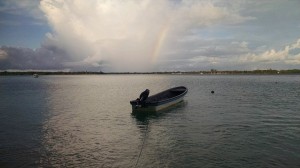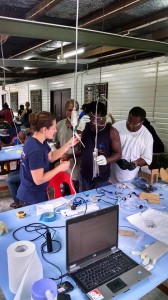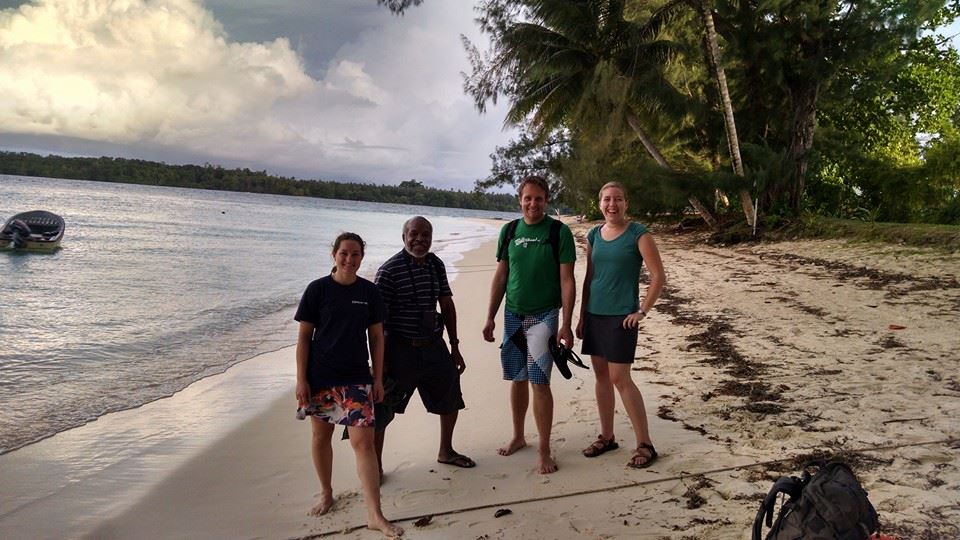
Hello from the warm, sunny island of Nago, home of the National Fisheries College field station and staging ground for Marine Ecology via Remote Observation, part of the Marine Science Short Course. My team and I arrived in Port Morseby on Friday, where we met with Jamie on her way home and and caught up with my former student, now lecturer at UPNG, Freddie Alei, who joins us for the next week of class. Another day of travel brought us to the shores of Nusa Island. We had our first chance to meet the students on Sunday, during a walk around the local beach, followed by an afternoon flying Independent Lee, one of our demonstration robots, from the Fisheries’ jetty. It was a nice warm up for an intensive week of robotics and marine ecology.
There are two major components to the #ROV2PNG portion of the Marine Science Short Course. The first, and most visible, is the construction and operation of the OpenROV, an open-source underwater robot that is incredibly adaptable and expandable. Over the last three days, students have learned how to solder, weld acrylic, test electronics, use epoxy resins, and work together to assemble the chassis, endcaps, battery tubes, motors, and brain of the robot. Excitement is mounting as we approach the moment when we can power up the ROVs for the first time.

Mid-day on the third day of building, as the robots began to look more like ROVs and less like piles of components, was the perfect moment to hold a naming ceremony. Each robot was christened with a Tok Pisin name. In a few days, Rasta Pis (octopus), NilPis (a local fish), Pismeri (mermaid), Meri Niuailan (woman from New Ireland), Iauro (slang for ‘it’s all good’), and Solwara (salt water) will dive for the first time. We ran the numbers, and on dive day, these six robots, combined with Indy, Phantom, and Thunder, will be the largest deployment of OpenROV’s in the field, ever.
Our group has taken to the slogan “failure is part of our pedagogy.” We want our students to complete this class not only with the knowledge to build and fly these robots, but also with the confidence to fix and troubleshoot problems as they arise. There’s only one way to teach that kind of adaptive, practical troubleshooting: stuff has to break. We’ve already overcome a few hurdles. Students have seen Dominik recover and repair a completely flooded OpenROV. Erika has pressed her robot, Phantom, into service, using parts of the chassis and end caps to replace components from the students kits. Independent Lee has become the course display model, being assembled and disassembled numerous times to demonstrate specific components and techniques.
In addition to building the robots, students also need the skills to use them as serious tools for marine ecological studies. Over the next week, students are developing, writing, and presenting grant proposals, both as individuals and in groups, to use the robots they’re building to study the marine environment around New Ireland. Discussions about writing marine ecology grants by myself are complemented by lectures on marine ecology, biodiversity, and community-supported ecology by Dr. Augustine Mungkaje, Dr. Amy Freitag, and Freddie Alei. All of which is in addition to a week of marine invertebrate zoology by Duke University graduate student Jamie Wagner.

As the robots come online and the class moves forward, we will transition from an intensive engineering class to an advanced field ecology course, with robots becoming the work horses for a series of novel investigations into the marine environment around New Ireland, Papua New Guinea.
For an entertaining summary of the first week of the course, check out William Saleu’s update, here.
